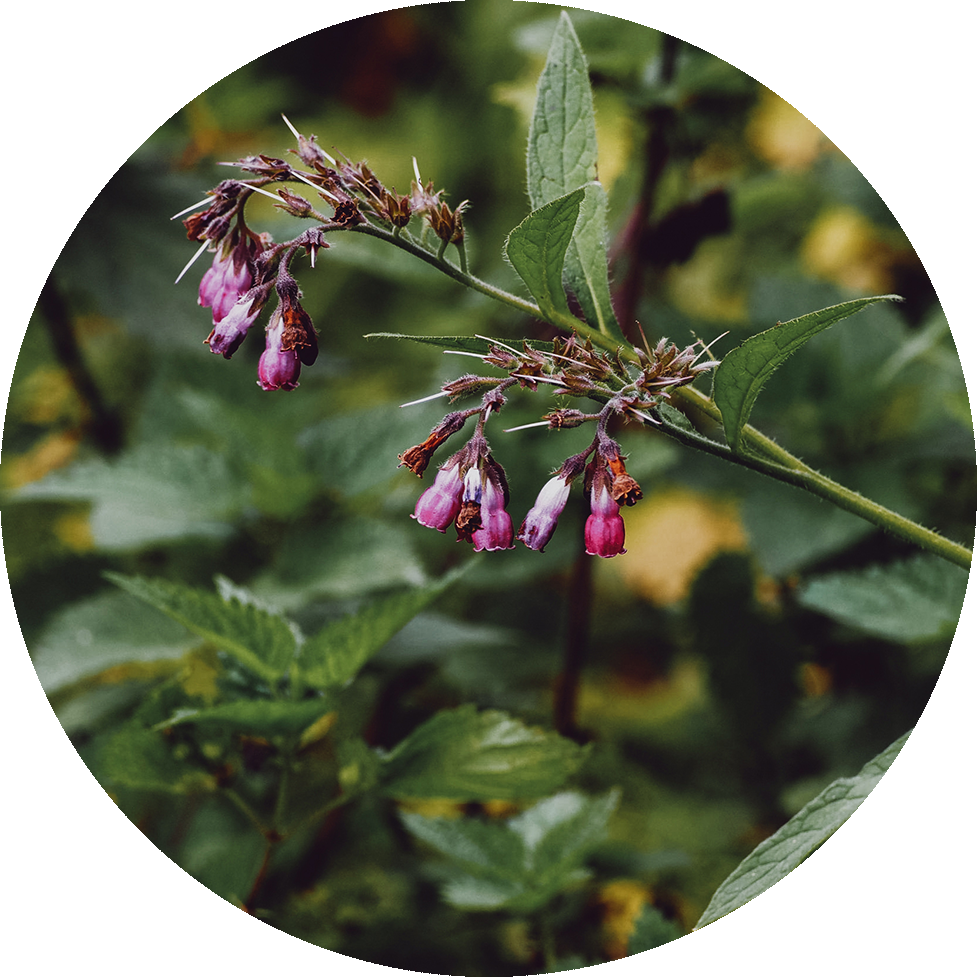Ingredients
Comfrey

LATIN NAME:
Symphytum Officinale
COMMON NAME:
Comfrey – Common Comfrey, True Comfrey, Quaker Comfrey
LOCATION:
Europe, Asia, North America
DESCRIPTION:
Comfrey is a large, tuberous perennial that is often grown ornamentally for its flowers and foliage. The leaves and stems can also be cooked as a vegetable, similar to spinach, or used in herbal teas. Comfrey is also a valued source of fertilizer for organic gardeners. It is very deep-rooted, which allows it to mine nutrients from the soil naturally – fertilization uses include compost activation, liquid fertilization, mulch, and more.
Comfrey has been cultivated since 400 B.C. as a healing herb. Immigrants first brought the herb to America in the 1600s for medicinal use. It was used during World War I to help heal maggot-infested wounds. Comfrey has since taken up residence along roadsides and waste areas throughout the U.S.
TRADITIONAL APOTHECARY:
Although most view comfrey as unsafe to ingest internally, it has a longstanding reputation as a therapeutic herb. Historically, it was said to have bone- and tooth-building properties, and was used to treat ailments such as bronchitis, broken bones, sprains, arthritis, and other aches. In modern medicine, comfrey is used mostly as a topically treatment for painful muscles and joints, wounds, inflammation, burns, and bruises. It remains very popular in the world of herbal medicine due to its ability to quickly heal outer tissue and wounds.












